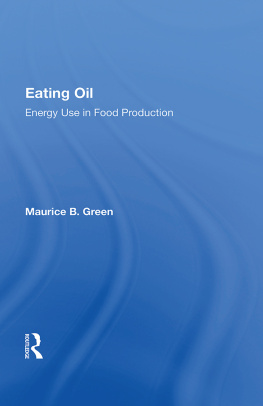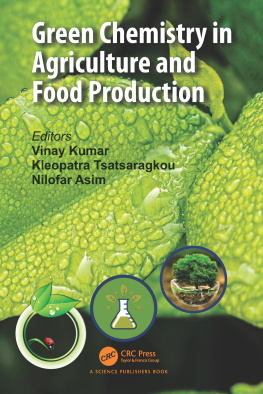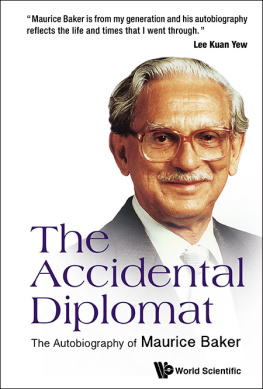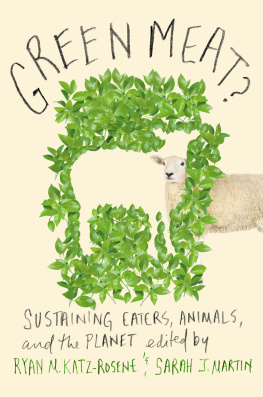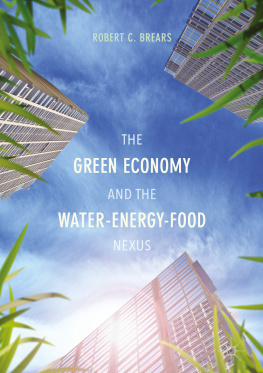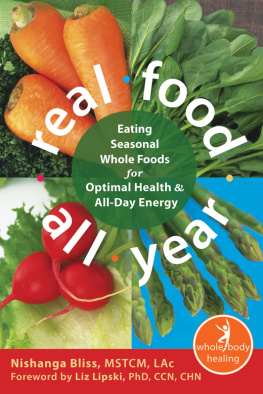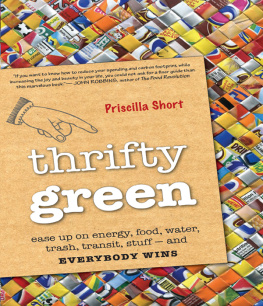First published 1978 by Westview Press
Published 2018 by Routledge
52 Vanderbilt Avenue, New York, NY 10017
2 Park Square, Milton Park, Abingdon, Oxon OX14 4RN
Routledge is an imprint of the Taylor & Francis Group, an informa business
Copyright 1978 by Taylor & Francis
All rights reserved. No part of this book may be reprinted or reproduced or utilised in any form or by any electronic, mechanical, or other means, now known or hereafter invented, including photocopying and recording, or in any information storage or retrieval system, without permission in writing from the publishers.
Notice:
Product or corporate names may be trademarks or registered trademarks, and are used only for identification and explanation without intent to infringe.
Library of Congress Cataloging in Publication Data
Green, Maurice Berkeley.
Eating oil.
Bibliography: p.
Includes index.
1. Food industry and tradeEnergy consumption. 2. AgricultureEnergy
consumption. I. Title.
TP370.5.G73 338.16 77-21577
ISBN 0-89158-244-4
ISBN 13: 978-0-367-01777-4 (hbk)
There are 4,000 million people in the world, of whom 1,000 million are undernourished. However, the 205 million people in the United States, and the people in most other developed countries, enjoy an adequate diet of wholesome and nourishing food, with a great variety of choice, and have to spend only about 20 percent of their disposable incomes to do so. This is possible only because large amounts of fossil fuel energy such as oil are put, on an ever-increasing scale, into the food production, processing, distribution, and preparation systems of their nations. But, as populations increase and the amounts of arable land available remain the same, the law of diminishing returns applies. World resources of fossil fuels are limited and irreplaceable, so their use to bolster food production cannot be continued indefinitely. We cannot go on eating oil for very much longer. The United States, despite its wealth, is not immune from the hunger of the Third Worldit is only a matter of time.
This book is addressed to all those who care whether their great-grandchildren will have enough to eat when they are adults, and who also, perhaps, have some concern for the human race as a whole. It is intended to provide facts and figures to show how fast fossil fuel energy is being used up in the developed countries, so that the public may appreciate the seriousness of the problem, and to suggest some ways in which economies might be made. In the final chapters, consideration is given to the problems of feeding the population of the developing countries to whom the expedient of using fossil fuel energy to boost food production is not available.
This is a book by an amateur who is deeply concerned by the problems both for the developed and developing countries, but who does not pretend to suggest that he could even begin to solve them. They are problems for governments, but governments will act only if the people demand them to do so, and it is hoped that this book will stimulate readers to press for actionand to be willing to foot the bill.
As the food system is very complex, assumptions have to be made to estimate the amounts of fossil fuel energy used in various parts of it. The figures quoted in this book should not, therefore, be regarded as precise. It is, however, believed that they are of the right order and that any errors are not sufficient to invalidate the arguments advanced or conclusions drawn.
I gratefully acknowledge the many publications on which I have drawn as sources of information. Where figures from any of these have been quoted, references are given in the back of the book in the customary manner for scientific publications. The masses of statistics published by departments of the governments of the United States and the United Kingdom and by trade associations have been particularly valuable, as also were those of the Food and Agriculture Organization.
I also wish to thank Rosalind Evans who typed the manuscript from almost illegible handwriting.
The opinions expressed in the book are entirely my own and do not necessarily reflect the views of my employer, Imperial Chemical Industries Limited.
M. B. G.
Chapter One
The Nature of the Problem
How long can we go on eating oil? Before we try to answer this question, it is desirable to understand how and why we do eat it. If you live in a developed country like the United States or the United Kingdom, every mouthful of food you eatunless you gather wild berries by the roadsideirrevocably consumes a finite amount of irreplaceable fossil fuel energy. This is because direct energy in the form of tractor fuel and indirect energy in the form of fertilizers are put into the operations of growing plant food and rearing animal food, and because energy is used in processing, distributing, and preparing food. Each of these stages uses some fossil fuel energy, so by the time the food reaches your table it has accumulated a fossil fuel energy input. (This is different from the energy that your body can get from food by eating it, which is commonly measured by the calorie content and which is the energy output.) We eat oil, therefore, by putting fossil fuel energy into the processes of food production, into the nations food system.

